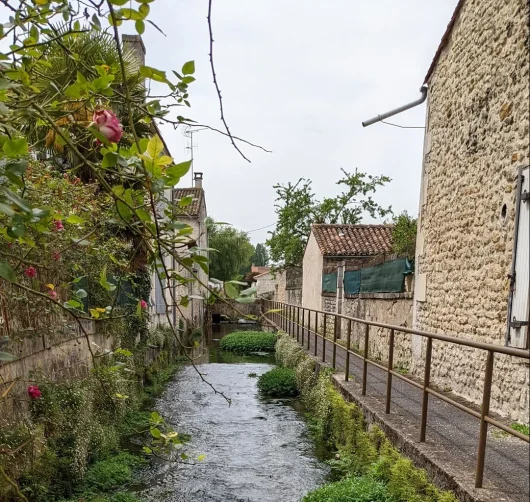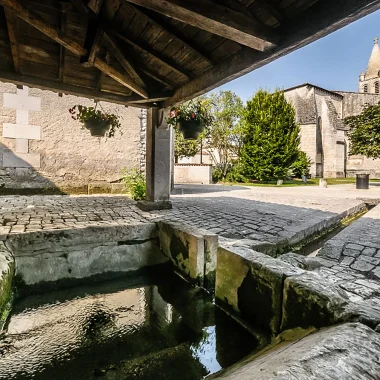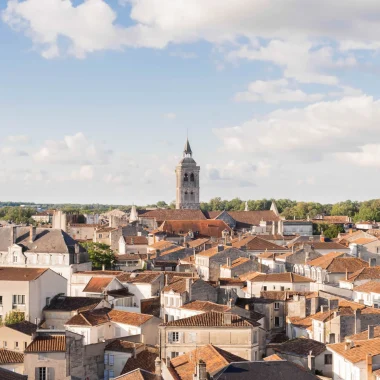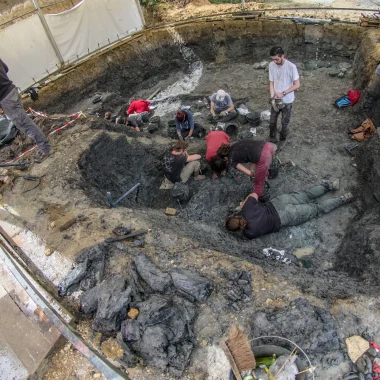A LITTLE HISTORY …
Although its name indicates the contrary, Châteauneuf is actually very old. The prehistoric caves of Haute Roche show that Man lived there from the Quaternary era. The site has become an interesting prehistoric centre. Thousands of years have gone by and the majestic cliffs are still there, enveloped in greenery.
Gauls and Romans also left their mark. The Roman road called Boisné crosses the entire area.
L’île de la Fuie
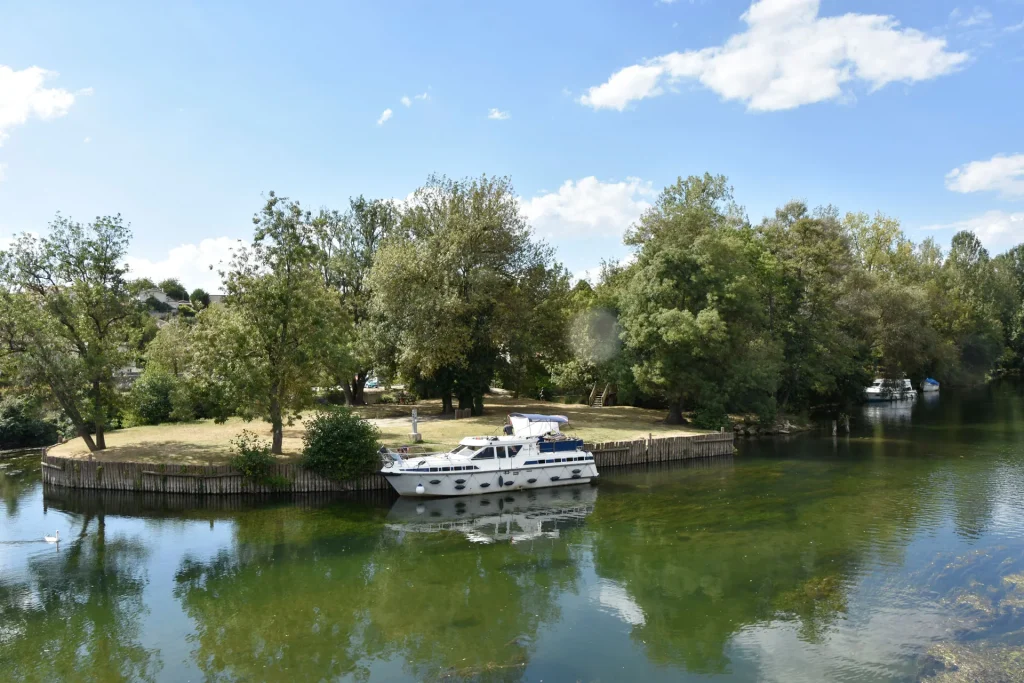
Châteauneuf in the Middle Ages was just a little village called Berdeville.
It had a wooden castle built on the île de Calais, also known as l’île de la Fuie; it burnt down in 1081 and was replaced by a stone edifice on the hillside that dominates the Charente. This fortress rapidly became the most important in the area because it has the sole stone bridge between Angoulême and Cognac. The fortress defended the bridge and thus had a considerable importance.
Châteauneuf-sur-Charente was involved in all the notable events that happened in our region. It was a strategic point during the Hundred Years’ War, the Wars of Religion and La Fronde (early 17th century).
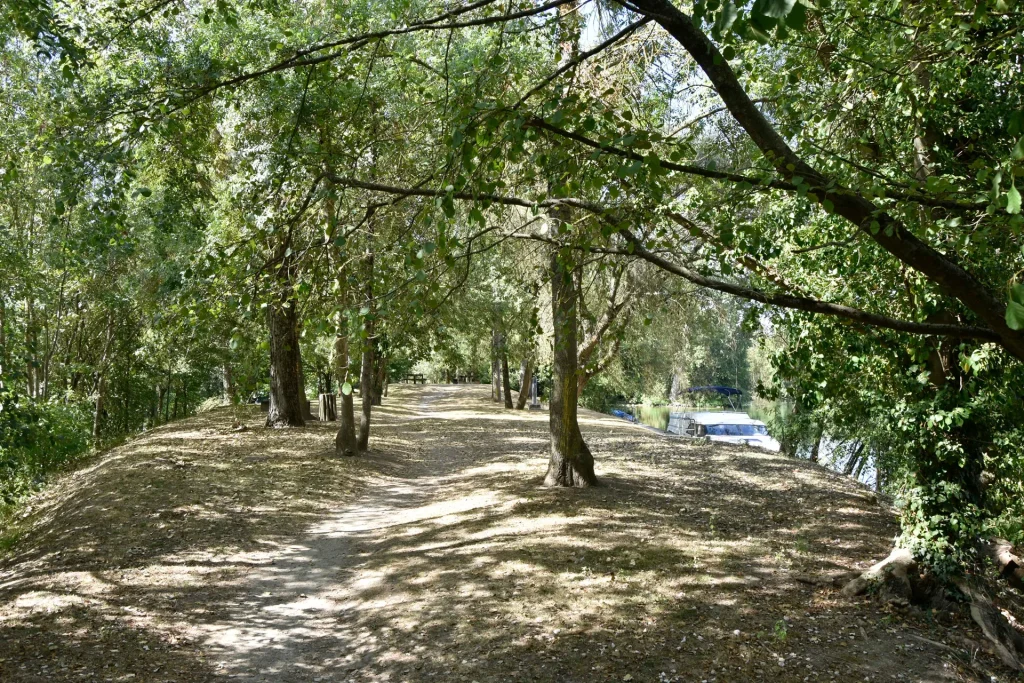
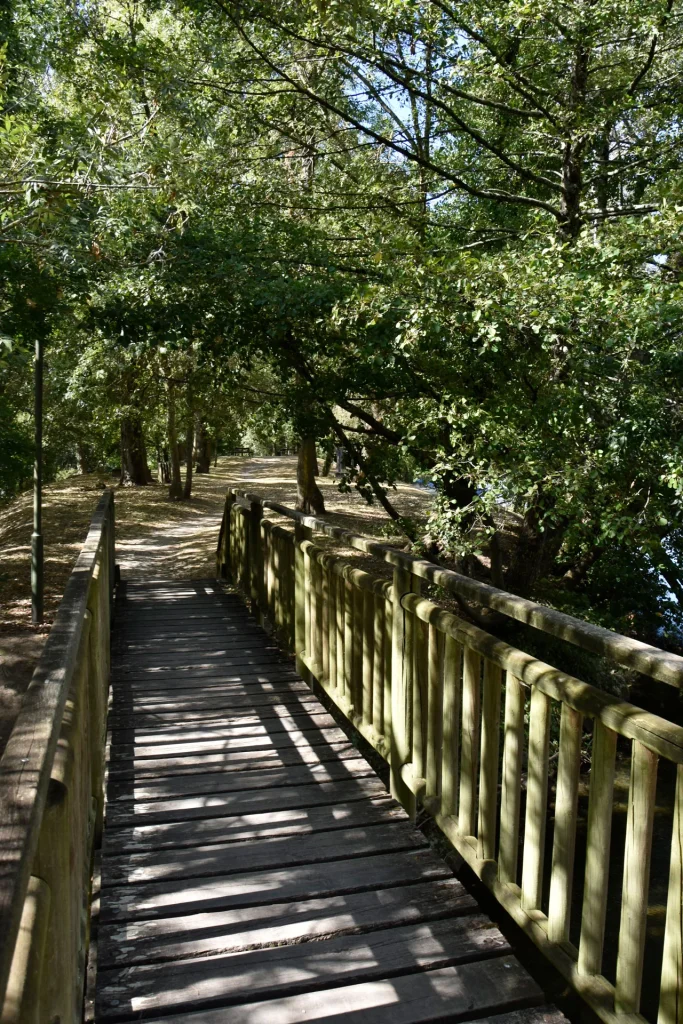
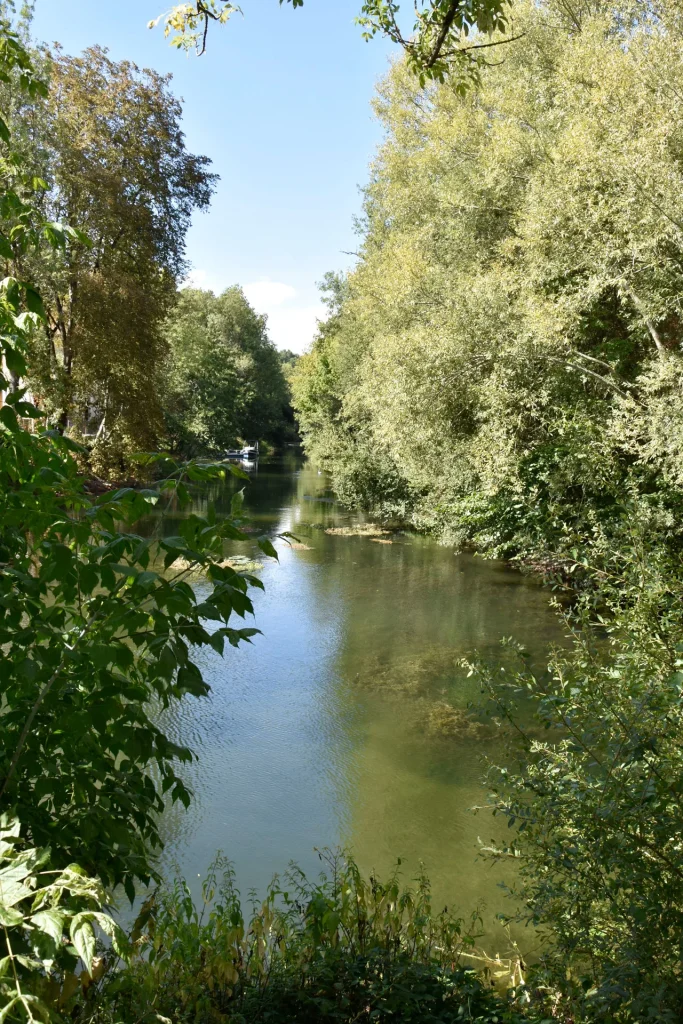
So where is the castle ?
The actual site is uncertain. Somewhere between the current Champ de Foire and the Place de la Liberté, Place de la Mairie.
There are neither plans nor a description of the château.
It dominated the river and was a perfect spot for surveillance of water-borne transport, in particular goods on the gabares. Nothing remains today of the fortress, except its name!
A resort for kings and nobles
During times of peace, Châteauneuf was an agreeable place to stay so it was not surprising that the town attracted kings and nobles. Count Jean, grandfather of François 1st made it his favourite residence. His son, Charles d’Angoulême, father of François 1st died there in 1496. François himself owned a dwelling in Châteauneuf and often spent time there after acceding to the throne. It was where he enjoyed his honeymoon with Eléonore d’Autriche. The royal road went through Châteauneuf with a staging post in the town centre.
The Saint-Pierre church
at Châteauneuf-sur-Charente
Following the collapse of the bell tower, the upper part, the transept, choir and north crosspiece were rebuilt in the 15th century, hence the gothic influence that blends in well with the Romanesque nave. Important renovations were effected in the 19th century by Paul Abadie, who restored the cathedral of Angoulême.
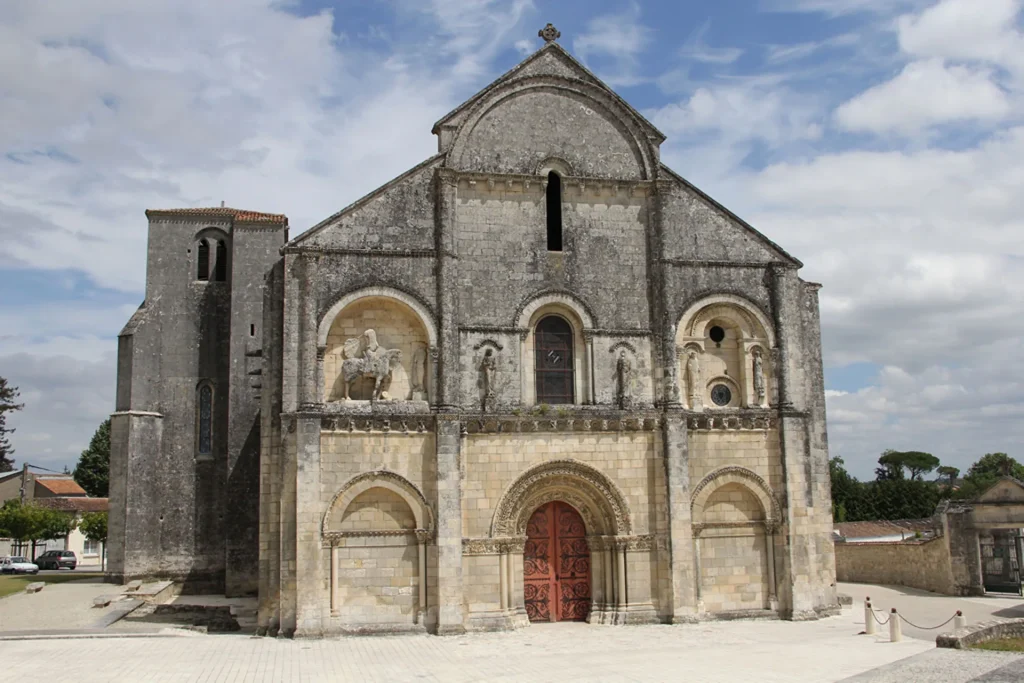
The 24m high façade is a fine example of Romanesque art. It is divided into three vertical parts, separated by pilasters that extend the columns up to three floors separated by carved cornices or batons.
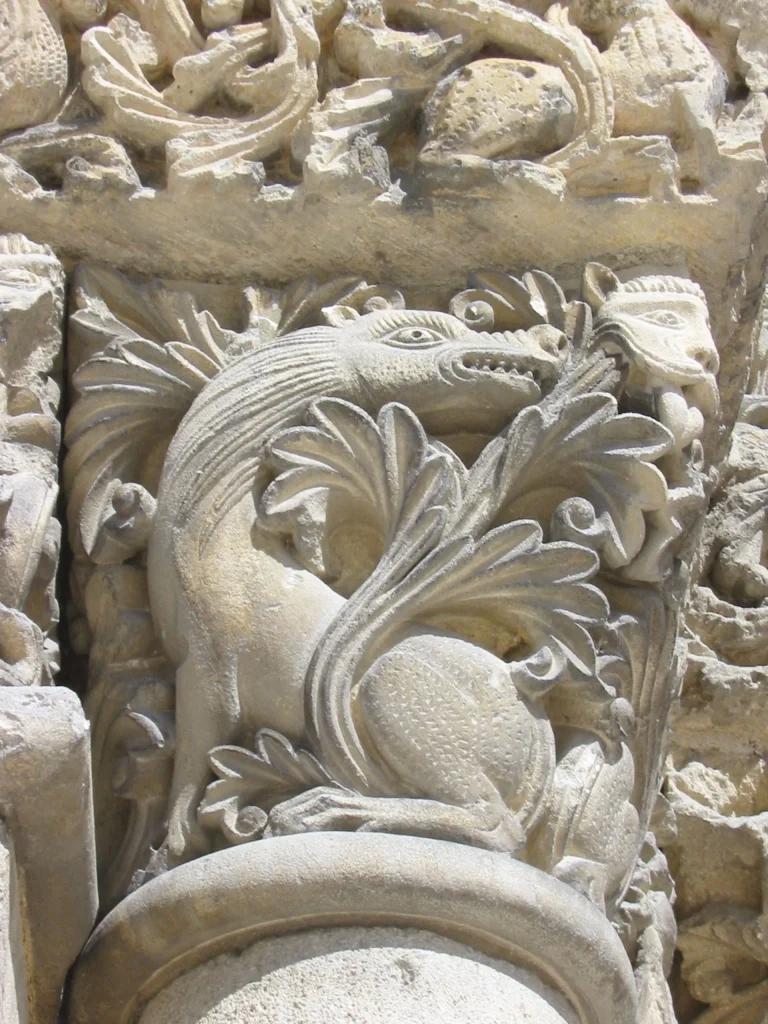
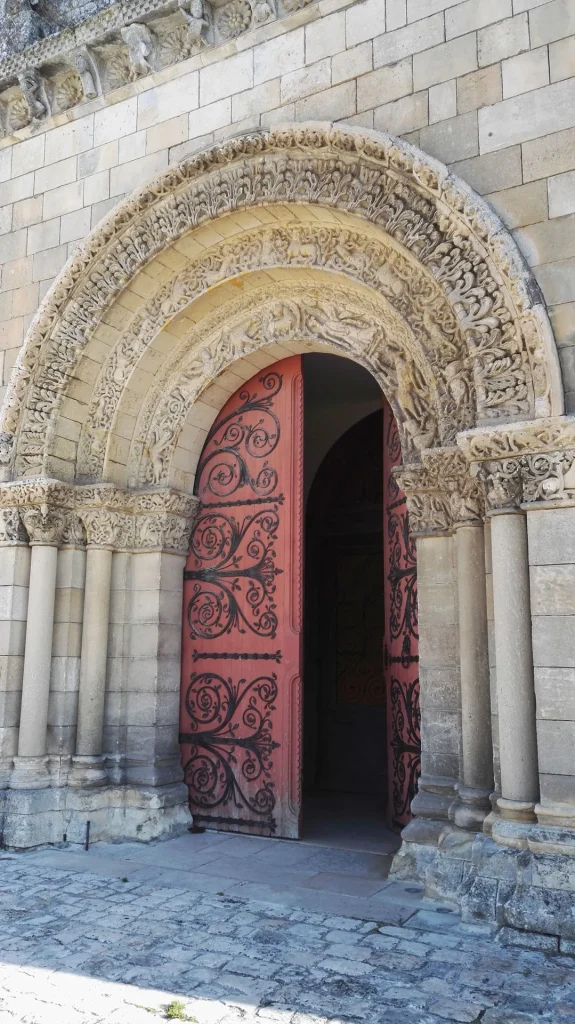
There are seven steps to descend for entry into the church. Three unequal naves in six spans occupy the space. Saint-Pierre church is a former Benedictine priory belonging to Bassac Abbey, founded at the end of the 11th century.
Our favourite
Nathalie’s guided visit, from Bardeville to Châteauneuf, history throughout the ages
If you’d like a guide to help you explore the town, Nathalie organises regular visits of Châteauneuf that are full of history and anecdotes !
Fair and market

The weekly market at Châteauneuf-sur-Charente takes place on the mornings of Tuesday, Thursday and Saturday outdoors in Rue Berthe et Jules Noblet and in the market hall.

